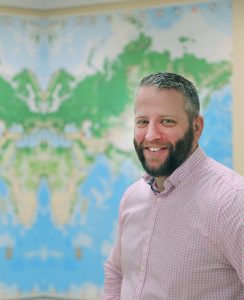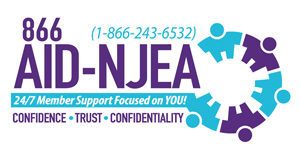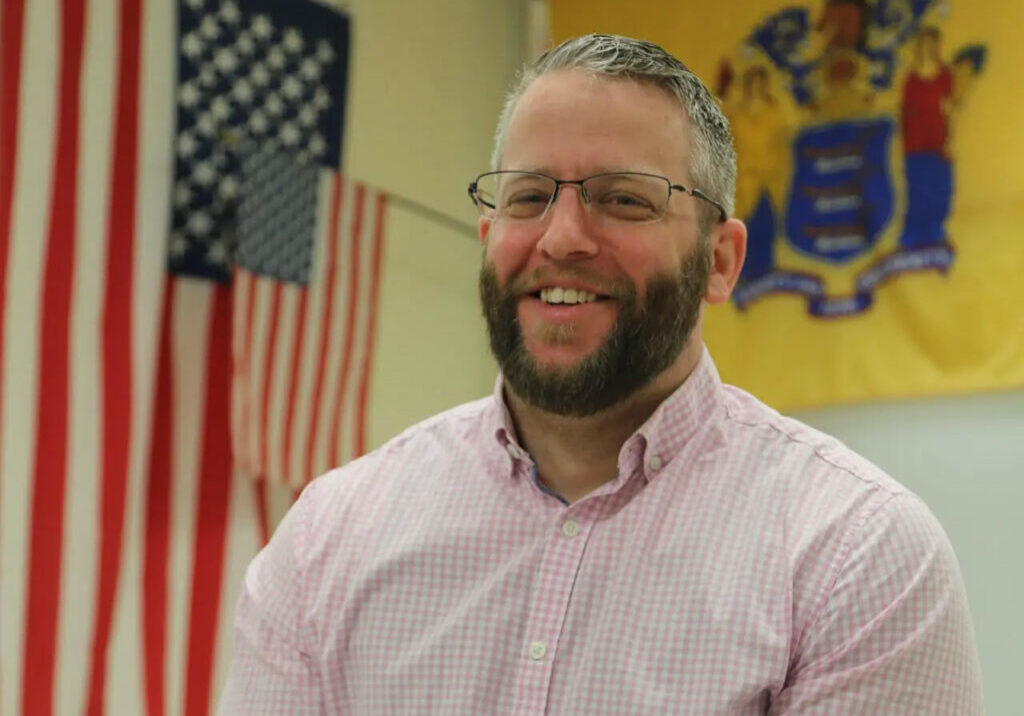By Brian Bigden
I had just finished what should have been a glorious breakfast at the Pancake House in Green Bay, Wisconsin after going to see my beloved Packers and some members of my family, before I started the drive back to Chicago to catch a flight home. However, I couldn’t finish my breakfast fast enough, couldn’t get to the airport fast enough, couldn’t fly home fast enough, because of a long laundry list of school and personal items that was running through my head that I needed to complete. My mind kept tick, tick, ticking with the things I had to do.

I have had days where I felt overwhelmed with things I have to get done, the normal stress that every teacher goes through. But this was to the extreme. I couldn’t stop thinking about what I had to get done, couldn’t stop thinking that I had to get out of that car right then and there, that I had to get home. This feeling consumed me, raising my heartbeat and my breathing rate. It was terrifying for both me and my wife. I was experiencing my first full-blown anxiety attack on the way to Chicago’s O’Hare International Airport.
The following few weeks didn’t get much better. I started to become consumed by my anxiety, going down a dark rabbit hole of research and talking about it endlessly with my wife. I took an exorbitant amount of sick days the following month because I just couldn’t be in a classroom. I couldn’t be trapped in a room where I could not leave. I couldn’t be trapped in my car for the 20-minute ride to work every day. I just NEEDED to be home lying on my couch talking myself out of this feeling of anxiousness, all while feeling my heart race.
Before I move on, this is where I feel a lot of people get in trouble. People see mental health issues as some sort of weakness or a contagious disease. Yes, something is wrong with them. Something was definitely wrong with me. But if a person has a stomach issue, what does that person do? When a person gets chronic migraines, where do they go? The answer is they go see a doctor the first chance they get. But we tend to keep anxiety, depression or any sort of mental health concern under wraps. This is what I did for about a year.
Being open with students
I teach high school Advanced Placement Psychology and Introduction to Psychology in my hometown of North Plainfield. I am very open about my bout with my general anxiety disorder (GAD). Every year at the beginning of my abnormal psychology unit, I ask my students to define anxiety, depression, schizophrenia and a couple other conditions. After they define them, I ask them if they know of anyone who has a mental disorder. Some will say they have a family member or someone distantly related to them. I ask if they think I have had any of the previously mentioned disorders. Most, if not all, say they do not think I have or had any of these disorders.
I tell my students that 18 percent of Americans suffer from anxiety and depression. About 7 percent of those people are, like them, between the ages of 18-25 years of age. That is when I tell my students that I have suffered from GAD and that I still must keep it in check like any other recurring condition, such as high blood pressure or acid reflux. This introduction to the unit is an eye-opener for my students.
Myths versus realities of mental illness
What we hear in the news, watch from Hollywood, or tell one another are the rare instances that make a “good” story. News stories and dramatizations of serial killers and disturbing characters in films like “The Joker” and “Split,” help to reinforce a stigma about what it means to live with mental health issues. Because we do not hear about people living successful lives while addressing their mental health diagnoses, we cannot envision a life that can be happily lived while managing these issues. Instead, we are left with stories that perpetuate a stigma.

Students in Brian Bigden’s Introduction to Psychology class pose with the class “therapy clown.”
People hold onto these myths and believe that everyone who has a mental illness is either violently disturbed or broken and should be treated as an outcast. To tell you the truth, these are the reasons why most of my students, before talking to me, take psychology. They are curious about this aspect of humanity. But in my class, we begin to break the stigma.
Thanks to the American Psychological Association, I show videos from Bring Change 2 Mind, a nonprofit organization dedicated to encouraging dialogue about mental health, and to raising awareness, understanding, and empathy. It was co-founded by Glenn Close. Their videos are powerful.
Seeing the students’ faces while watching people describe what they go through when they disclose their mental disorder to friends, colleagues and family members hits them right in the heart. The stigma of having a mental disorder ostracizes them from society. They are rejected by family members who are not educated about the conditions from which they suffer. It proves that the stigma of a mental disorder can discourage those individuals from revealing that they have an issue—an issue that can be remedied. If these individuals are afraid of talking about their issues, then they certainly aren’t getting the help they need. People are suffering every day because they fear that they will be isolated and will not have the support systems they need to be healthy.
It took me a long time to mention my anxiety to my wife because of this. I felt weak. I believed in the stigma, and I felt it was better to be left alone to deal with my anxiety. I missed out on a lot of encouragement and support because I was unwilling to share my struggle with my wife. Once I finally did, things began to get better.
But my job is to educate. I teach my students about some of the types of mental disorders and what can cause mental disorders. My students are introduced to conditions such as phobias. This is where all my students tell stories of a time when they were bitten by a dog when they were younger, or the power went out and they became afraid of the dark, or their fear that their parents’ divorce will leave them alone, or even experiencing depression because they believe that they never succeed.
All of these stories create some sort of anxiety or depression. I tell my students that these things are not their fault. Instead, these experiences can trigger a biological change in the body and brain. They need to know that EVERYONE has a story, and EVERYONE has a trigger.
“You are NOT alone,” I tell them over and over again.
Ending the stigma
After my students have been educated about various mental disorders, I tell them that we are now in charge of ending the stigma of mental illness. My students’ projects include identifying ways that they can work to end the stigmas around the mental disorder they are researching. Examples could be finding success stories, such as famous people who have a mental disorder. Or they could speak about mental disorders and educate others about them.
Next, we discuss what can we do for those who are suffering from a mental disorder. We create a roundtable discussion of possibilities of how we can help the ones we love who have a disorder. Suggestions include counseling, being trustworthy, providing a friendly ear for listening, and being part of their support group. It is inspiring to see how my students care for one another. High school students sometimes have a negative reputation, but as someone who sees and interacts with high school students every day, I can attest to the fact that when presented with a crisis, they are very caring about others.
As for me, I hope that by sharing my story with my students—and now with the readers of the NJEA Review—we can all work to end the stigma around mental health concerns, be on the lookout to provide compassion and support for the people in our lives who may be struggling, and start a dialogue about how we can be there for one another.
Brian Bigden is a psychology teacher at North Plainfield High School. He is the membership chair of the North Plainfield Education Association. He can be reached at brbigden@gmail.com.
AID-NJEA
Your NJEA helpline – Confidential, Accessible, and Resourceful

NJEA, NJREA and NJEA Preservice members and their families can contact AID-NJEA at 866-AID-NJEA (866-243-6532). This confidential, toll-free help line, based out of Rutgers University Behavioral Health Care, is staffed by qualified retired and active members and answered by a live person 24 hours a day and seven days a week. AID-NJEA is for professional and personal concerns and is not just limited to mental health assistance. Call center staff also maintain an extensive, up-to-date resource file to assist callers in contacting NJEA Member Benefits, social services, government agencies and other locations within NJEA headquarters or its UniServ offices.
AID-NJEA uses the Peer Support Model. That means that each AID-NJEA staff member has public education experience and specialized training to support a wide range of issues. This shared experience helps the call center staff to identify presenting problems and discuss appropriate solutions and referrals. Personal concerns, discussion of family matters, resource information, and just plain conversation are only a few of the things that can be discussed. You will always get a real human voice with no automated systems to navigate, and only members have this convenient, 21st-century option available at no cost.
If you need a listening ear, confidentially talking by phone with another person from the comfort and privacy of your home can be a huge benefit. Hundreds of members use this free member benefit, month after month. With no extra numbers to push and a human voice to greet you, contact is readily accessible to members and their families
